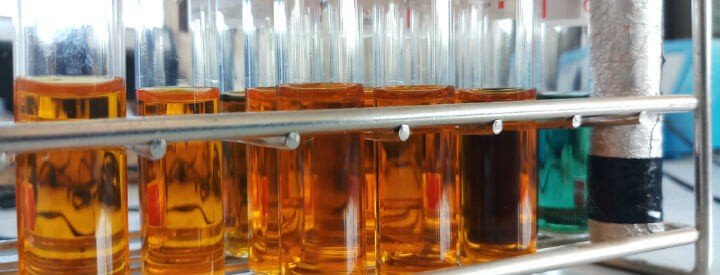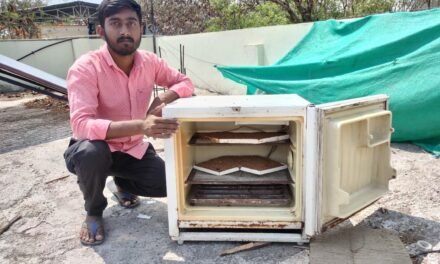Determination of COD
Chemical oxygen demand (COD) is a measure of the amount of dissolved oxygen needed to oxidize organic chemicals in water. The initial COD of black water needs to be determined, and the following procedure utilizing a COD digester is employed:
Materials for COD test:
- Potassium dichromate (K2Cr2O7)
- Mercuric sulphate (HgSO4)
- Sulfuric acid (H2SO4)
- Ferrous ammonium sulphate (FAS)
- Ferron indicator
- Potassium hydrogen phosphate (KHP)
- 250 ml Erlenmeyer flask
- Reflux condenser
- COD tubes
- Measuring cylinder
- Analytical balance
- COD tube stands
- Hand gloves
Preparation of chemicals:
- Preparation of 0.25 N potassium dichromate solution: Dissolve 12.25 gm potassium dichromate powder in 1000 ml distilled water in a 1000 ml volumetric flask.
- Preparation of Ammonium Ferrous Sulphate solution: Dissolve 24.5 gm Ammonium Ferrous sulphate powder in 250 ml distilled water in a 250 ml volumetric flask. Add 5ml Sulphuric acid.
- Preparation of Potassium Hydrogen Phosphate solution: Dissolve 0.425 gm of dried KHP powder in 1000 ml distilled water in a 1000 ml volumetric flask. (Dry the powder for 2 hours in an oven)
Procedure:
- Place 0.4 gm AgSo4 (silver sulphate) in each COD tube.
- Add 20 ml sample to each COD tube.
- Add 20 ml distilled water to each COD tube.
- Add 1-2 pieces of stones (crushed beads).
- Add 10 ml (0.25 N) potassium dichromate solution.
- Slowly add 30 ml concentrated sulfuric acid while swirling. Add more K2Cr2O7 solution if the solution turns green.
- Place COD tubes in the COD apparatus and set the temperature to 150°C.
- Digest the samples for 2 hours at 150°C.
- After 2 hours, switch off the apparatus, remove the COD tubes, and cool the samples to room temperature.
- Transfer the samples to conical flasks and add 150 ml distilled water.
- Perform titration with 0.1 N FAS solution using Ferron indicator.
- Calculate COD using the formula provided.
Formula of COD:
COD = {(a-b) X N X 8000}/ml of sample solution Where:
- A: Reading of blank solution
- B: Reading with sample solution
- N: Normality of FAS solution
- Dilution factor = (ml of sample + distilled water) / ml of sample
Conclusion:
The experiment demonstrates the synthesis of silver sulfate from silver with a yield of 7.5 grams from 5 grams of silver. This method requires a quarter less amount compared to the market price of standard silver sulfate. Future work will focus on the recovery of silver sulfate from waste silver chloride.




